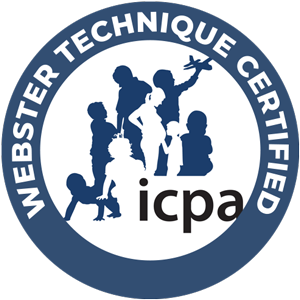The Clinical Benefits of Chiropractic Care Across the Lifespan

Chiropractic care offers significant therapeutic benefits across all age groups. This non-invasive, conservative approach to healthcare focuses on the musculoskeletal system, particularly the spine, to alleviate pain, improve function, and enhance overall well-being. Clinical evidence supports the efficacy of chiropractic interventions in addressing various conditions, from infantile colic to geriatric mobility issues. Chiropractic care contributes to improved quality of life at every developmental stage by promoting the body’s innate healing mechanisms.
Understanding Chiropractic Care
Chiropractic care is a healthcare discipline that emphasizes the relationship between the musculoskeletal system, particularly the spine, and overall health. The primary focus is on diagnosing, treating, and preventing mechanical disorders of the musculoskeletal system and their effects on the nervous system and general health.
Chiropractors employ manual techniques, primarily spinal manipulation or adjustment, to restore joint mobility impaired by tissue injury. Such injuries may result from traumatic events or repetitive stress. Chiropractic intervention aims to normalize joint function, alleviate pain, and support the body’s natural healing processes.
Clinical Benefits of Chiropractic Care
Pain Management and Reduction
Chiropractic care has demonstrated efficacy in managing various pain conditions, particularly those related to the spine and extremities.
Clinical Example: A 45-year-old female patient presenting with chronic lower back pain (rated 7/10 on the Visual Analog Scale) reported a significant reduction in pain intensity (2/10) after six weeks of chiropractic treatment, including spinal manipulation and therapeutic exercises.
See more: Chiropractic for Back Pain
Enhanced Mobility and Flexibility
Chiropractic interventions can improve joint range of motion and overall flexibility, which is particularly beneficial for patients with restricted mobility due to musculoskeletal conditions.
Case Report: An 80-year-old male patient with osteoarthritis reported improved functional capacity and increased participation in daily activities following a three-month chiropractic course, including gentle manipulations and prescribed exercises.
Potential Immunological Benefits
Some studies suggest a correlation between chiropractic care and enhanced immune function, though more research is needed.
Research Note: A study published in the Journal of Manipulative and Physiological Therapeutics indicated a potential increase in immunoglobulin A levels following chiropractic manipulation, suggesting a possible impact on immune system function.
Postural Improvement
Chiropractic care often includes postural assessment and correction, which can be particularly beneficial in addressing modern postural issues related to prolonged sitting and technology use.
Clinical Assessment: Postural evaluation typically includes standing posture analysis, with attention to the alignment of the head, shoulders, and pelvis relative to a plumb line. Deviations from ideal alignment may be addressed through manual therapy and prescribed exercises.
Conservative Pain Management
Chiropractic care offers a non-pharmacological approach to pain management, potentially reducing reliance on analgesic medications, including opioids.
Case Study: A patient with chronic pain reported a 60% reduction in opioid use after incorporating regular chiropractic care into their pain management regimen under the supervision of their primary care physician.
Chiropractic Techniques and Modalities
Spinal Manipulation
Spinal manipulation, or chiropractic adjustment, involves applying controlled force to spinal joints that have become hypomobile or restricted movement. This technique aims to restore joint mobility, alleviate pain, and normalize function.
Soft Tissue Therapy
Chiropractors may employ various soft tissue techniques to address muscle tension, adhesions, and scar tissue. These may include myofascial release, trigger point therapy, and instrumental soft tissue mobilization.
Therapeutic Exercise and Rehabilitation
Prescribed exercises are integral to chiropractic care, strengthening supporting musculature, improving flexibility, and enhancing overall function. These exercises are tailored to the patient’s specific condition and functional goals.
Nutritional and Lifestyle Counseling
Comprehensive chiropractic care often includes patient education on nutrition, ergonomics, and lifestyle modifications to support overall health and prevent future musculoskeletal issues.
Chiropractic Care Across the Lifespan
Pediatric Chiropractic Care
Chiropractic care for pediatric patients involves gentle, age-appropriate techniques to address various conditions:
- Infantile Colic: Some studies suggest the potential benefits of gentle spinal manipulation in reducing symptoms of infantile colic, though more research is needed.
- Adolescent Postural Issues: Chiropractic care may address postural imbalances related to growth, heavy backpack use, or sports-related injuries.
Chiropractic Care for Adults
Adult patients may benefit from chiropractic care for various musculoskeletal complaints:
- Occupational-related musculoskeletal disorders
- Pregnancy-associated back pain
- Sports injury prevention and performance optimization
Geriatric Chiropractic Care
Chiropractic interventions for geriatric patients focus on maintaining mobility, managing chronic conditions, and improving quality of life:
- Osteoarthritis Management: Gentle manipulations and exercises may help manage symptoms of osteoarthritis.
- Fall Prevention: Chiropractic care may improve balance and proprioception, potentially reducing fall risk.
Clinical Example: A 75-year-old female patient with osteoarthritis reported decreased joint pain, improved balance, and reduced fall frequency following a structured chiropractic care program.
Chiropractic care offers a range of potential benefits across the lifespan, from pediatric to geriatric populations. Chiropractic interventions aim to alleviate pain, improve function, and enhance quality of life by focusing on the relationship between the musculoskeletal system and overall health. As with any medical intervention, chiropractic care should be pursued under the guidance of qualified healthcare professionals and in conjunction with other appropriate medical care.
Patients are encouraged to consult with the licensed practitioners at Whole Body Wellness for comprehensive chiropractic evaluation and treatment. Our team is committed to providing evidence-based, patient-centered care to optimize health and well-being at every stage of life.
Frequently Asked Questions
Is chiropractic care safe?
Chiropractic care is safe if done by a licensed, qualified chiropractor. However, like any healthcare intervention, there are risks. They may include mild discomfort, stiffness, or headaches. These side effects are usually temporary. It would help to tell your chiropractor about any concerns or medical conditions before starting treatment.
How often should I see a chiropractor?
The frequency of chiropractic visits depends on individual needs and treatment goals. Some patients may benefit from regular care. Others may only need occasional adjustments. Your chiropractor will recommend a treatment plan for your condition and goals.
Does chiropractic care interact with medications?
Inform your chiropractor of all medications, including OTC drugs and supplements. Chiropractic care is usually safe. But, it may interact with some medicines. Your chiropractor can assess any potential concerns and provide appropriate guidance.
Does insurance cover chiropractic care?
Many health insurance plans cover chiropractic care, but the extent of coverage varies. It’s advisable to check with your insurance provider to understand your benefits. Some chiropractors offer flexible payment plans or accept payment through health savings accounts (HSAs) and flexible spending accounts (FSAs).
Can chiropractic care help with chronic pain?
Chiropractic care is effective in managing chronic pain conditions such as lower back pain, neck pain, and headaches. Chiropractic adjustments, with other therapies and lifestyle changes, can relieve pain. They can also improve quality of life.




